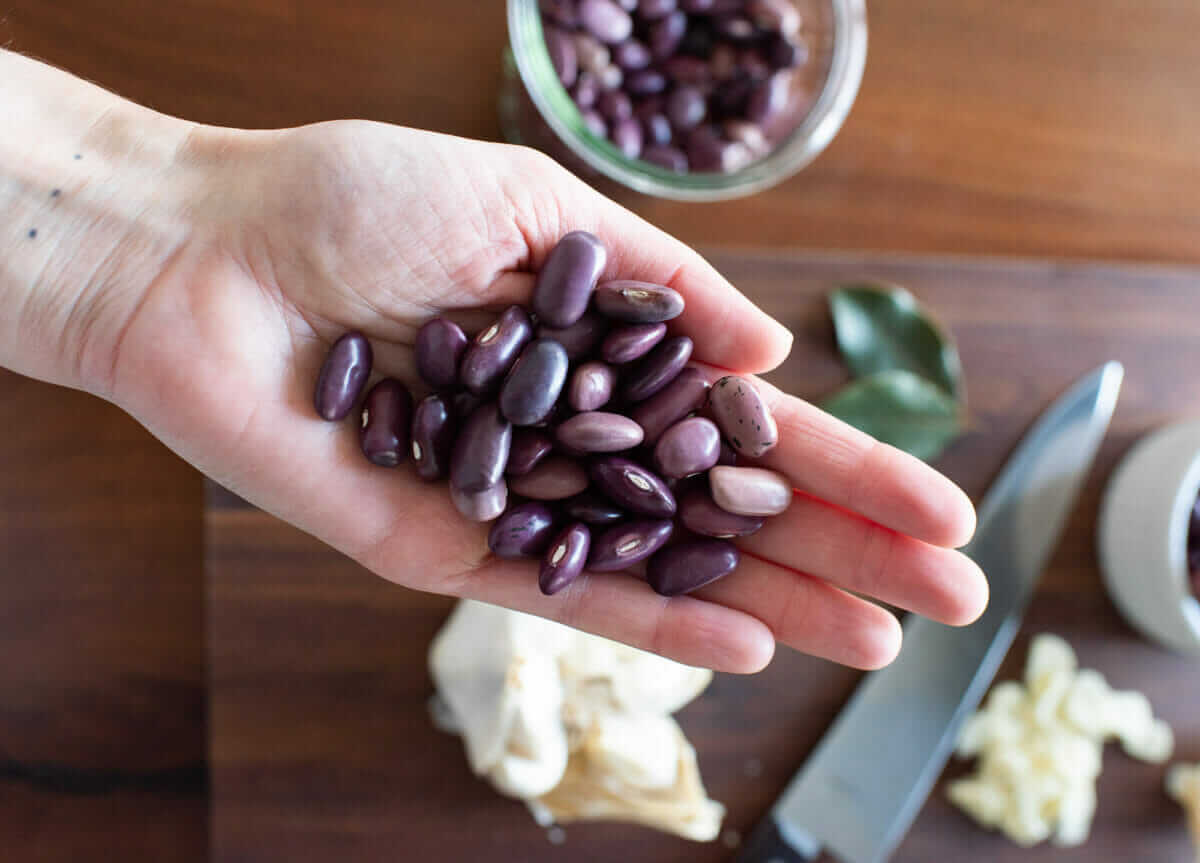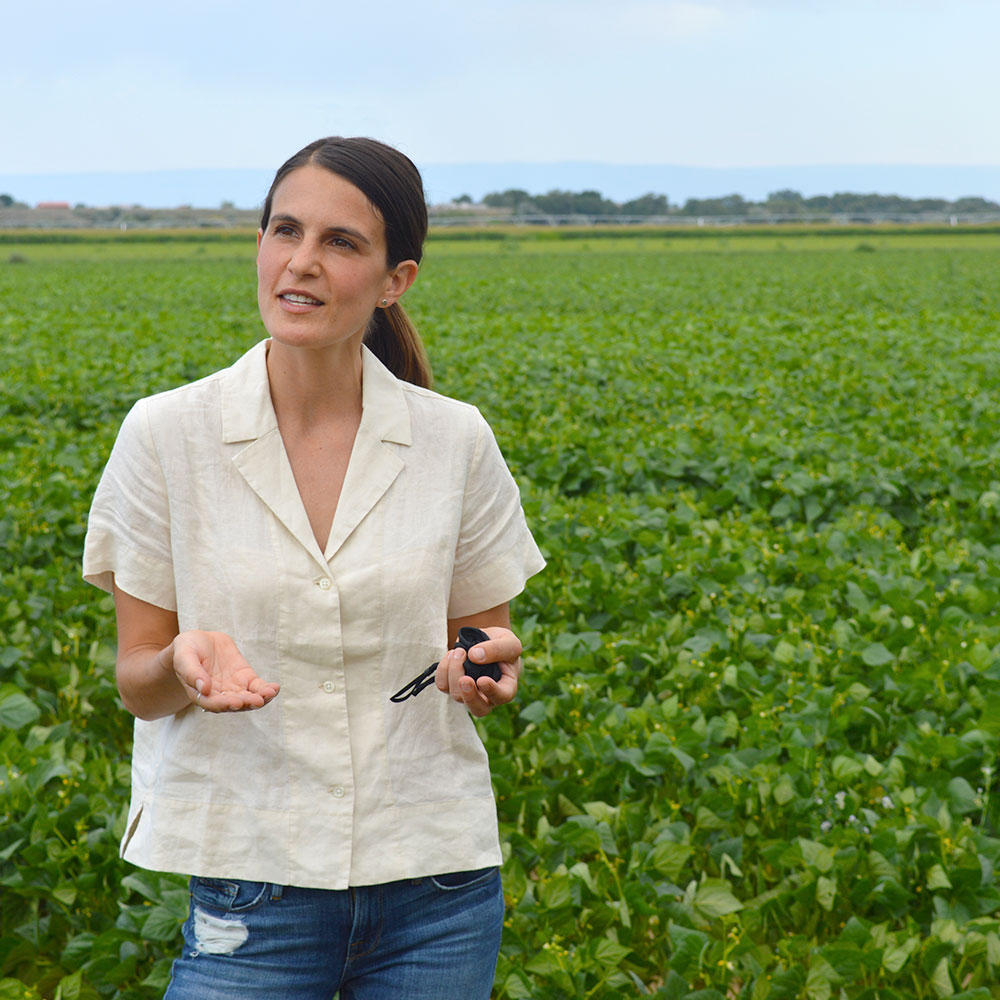Breeding Better Beans
Plant scientists work to develop new dry bean varieties that can endure climate change.
Breeding Better Beans
Plant scientists work to develop new dry bean varieties that can endure climate change.

Researchers are working to develop stress-resistant beans.courtesy of Primary Beans
Until last year, beans were rather unfashionable among many Americans. The pandemic helped change that, boosting bean sales by as much as 400 percent as people stocked up on shelf-stable goods and prepared more meals at home.
Of course, beans have long been an important staple in other cultures, especially for people in Africa and Latin America, where they’re served daily, often with several meals. Rich in nutrients like protein and minerals, beans are also affordable and filling. And when they’re dried and stored properly, they can last for several years. But successfully cultivating them in regions that rely on them most is becoming increasingly challenging due to climate change.
Plant breeders are now working to develop high-yielding, stress-resistant cultivars that can endure hot, dry growing conditions. “Research has pointed out that it will get too hot to keep growing [existing] beans in eastern Africa,” says Francisco Gomez, an assistant professor and researcher in the bean breeding and genetics program at Michigan State University (MSU). The program has released more than 50 new bean varieties since being founded in the early 1900s.
Unlike growers of heirloom bean varieties, who aim to preserve the culinary history of once-lost varieties, bean breeders are focused on the future. Their goal is to develop better varieties of pinto, black and kidney beans, among others, that grow efficiently and sustainably.
Part of the legume family, beans are technically the fruit of a plant, meaning that instead of adding to greenhouse gas emissions, like meat production does, beans help reduce the harmful gases. Because of that, Gomez and other bean breeders are working to increase bean plants’ ability to absorb excess nitrogen in the atmosphere. “Beans are a solution for that, but we’ve mostly disregarded that [until now],” he says.
The entire breeding timeline—from crossing to trialing to selecting and finally releasing a new variety—can take as long as eight years. And like plant breeders of all kinds, bean researchers consider factors such as how long it takes the plant to mature, how much water it requires, as well as its disease resistance, nutrition and calorie qualities. They also consider how long the beans can be stored and how quickly they cook.

All of this is considered with farmers and consumers in mind, says Juan Osorno, dry bean breeder and associate professor of plant science at North Dakota State University, located in the country’s largest producing dry bean state. Osorno compares the breeding process to that of buying a new car.
“Usually, you like a car not just because of one thing. There’s a package of things you’re looking for. It’s not just color, but also four-wheel drive or whether it can fit a lot of people,” he says. “We’re trying to get as many of the good traits in one bean variety.”
Of course, none of this research matters if the beans aren’t embraced by consumers. Lesley Sykes launched a direct-to-consumer company called Primary Beans with her sister, Renee, last December to help get the word out about new varieties. The sisters partner with small-scale farmers to grow varieties like the UC Rio Zape, developed and released by UC Davis bean breeders last year, and the Mayocoba variety, which MSU bean researcher Karen Cichy is studying for its high bioavailability of nutrients and traits such as flavor and texture.
The company serves as a useful bridge between breeders and consumers, enabling the researchers to gain insight about how well-liked certain varieties are before pushing them out to be produced at larger scales. “That’s something that we raise when talking to breeders,” says Sykes, who worked in sustainable agricultural initiatives before starting Primary Beans. “For us to come in and say ‘we can take 50 pounds of whatever you’re testing and actually get feedback for you,’ that’s very exciting for these breeders.”
Sykes says she’s excited to help get these newly-bred varieties into the hands of home cooks. “We’re not really informing the [bean] breeding process, but we’re identifying what cool work is going on out there and doing what we can to showcase that,” she says.
Now, the next challenge dry beans face is all the anxiety people have over how to prepare them. The best secret? Even if you overcook beans, you can easily whip them up into a tasty dip.
Follow us
This work is licensed under a Creative Commons Attribution-NoDerivatives 4.0 International License.
Want to republish a Modern Farmer story?
We are happy for Modern Farmer stories to be shared, and encourage you to republish our articles for your audience. When doing so, we ask that you follow these guidelines:
Please credit us and our writers
For the author byline, please use “Author Name, Modern Farmer.” At the top of our stories, if on the web, please include this text and link: “This story was originally published by Modern Farmer.”
Please make sure to include a link back to either our home page or the article URL.
At the bottom of the story, please include the following text:
“Modern Farmer is a nonprofit initiative dedicated to raising awareness and catalyzing action at the intersection of food, agriculture, and society. Read more at <link>Modern Farmer</link>.”
Use our widget
We’d like to be able to track our stories, so we ask that if you republish our content, you do so using our widget (located on the left hand side of the article). The HTML code has a built-in tracker that tells us the data and domain where the story was published, as well as view counts.
Check the image requirements
It’s your responsibility to confirm you're licensed to republish images in our articles. Some images, such as those from commercial providers, don't allow their images to be republished without permission or payment. Copyright terms are generally listed in the image caption and attribution. You are welcome to omit our images or substitute with your own. Charts and interactive graphics follow the same rules.
Don’t change too much. Or, ask us first.
Articles must be republished in their entirety. It’s okay to change references to time (“today” to “yesterday”) or location (“Iowa City, IA” to “here”). But please keep everything else the same.
If you feel strongly that a more material edit needs to be made, get in touch with us at [email protected]. We’re happy to discuss it with the original author, but we must have prior approval for changes before publication.
Special cases
Extracts. You may run the first few lines or paragraphs of the article and then say: “Read the full article at Modern Farmer” with a link back to the original article.
Quotes. You may quote authors provided you include a link back to the article URL.
Translations. These require writer approval. To inquire about translation of a Modern Farmer article, contact us at [email protected]
Signed consent / copyright release forms. These are not required, provided you are following these guidelines.
Print. Articles can be republished in print under these same rules, with the exception that you do not need to include the links.
Tag us
When sharing the story on social media, please tag us using the following: - Twitter (@ModFarm) - Facebook (@ModernFarmerMedia) - Instagram (@modfarm)
Use our content respectfully
Modern Farmer is a nonprofit and as such we share our content for free and in good faith in order to reach new audiences. Respectfully,
No selling ads against our stories. It’s okay to put our stories on pages with ads.
Don’t republish our material wholesale, or automatically; you need to select stories to be republished individually.
You have no rights to sell, license, syndicate, or otherwise represent yourself as the authorized owner of our material to any third parties. This means that you cannot actively publish or submit our work for syndication to third party platforms or apps like Apple News or Google News. We understand that publishers cannot fully control when certain third parties automatically summarize or crawl content from publishers’ own sites.
Keep in touch
We want to hear from you if you love Modern Farmer content, have a collaboration idea, or anything else to share. As a nonprofit outlet, we work in service of our community and are always open to comments, feedback, and ideas. Contact us at [email protected].by Shelby Vittek, Modern Farmer
July 5, 2021
Modern Farmer Weekly
Solutions Hub
Innovations, ideas and inspiration. Actionable solutions for a resilient food system.
ExploreShare With Us
We want to hear from Modern Farmer readers who have thoughtful commentary, actionable solutions, or helpful ideas to share.
SubmitNecessary cookies are absolutely essential for the website to function properly. This category only includes cookies that ensures basic functionalities and security features of the website. These cookies do not store any personal information.
Any cookies that may not be particularly necessary for the website to function and are used specifically to collect user personal data via analytics, ads, other embedded contents are termed as non-necessary cookies.
Are these breeding programs using traditional hybridization, or are they genetically modifying the varieties?
Should not it read “,,, increase bean plants’ ability to absorb excess carbon dioxide in the atmosphere” as beans are nitrogen fixers and vascular plants can not absorb nitrogen from the atmosphere..